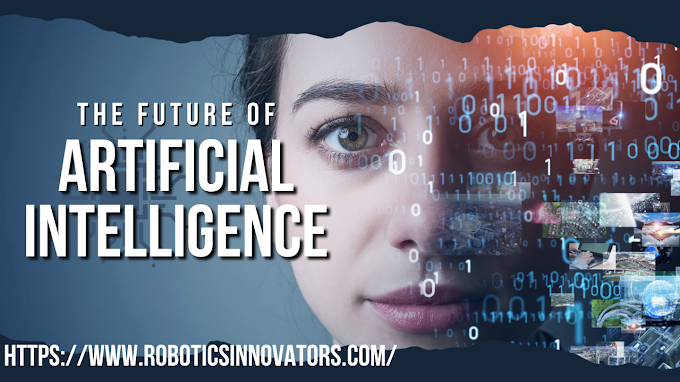Over the past few decades, two technology sectors that have rapidly expanded are artificial intelligence (AI) and robots. Particularly in terms of imitating human intelligence and decision-making abilities, AI has advanced significantly. In contrast, advances in hardware and mechanical design have been made in robotics. The convergence of these two domains generates a potent synergy that eventually results in the development of intelligent robots. This article will look at several instances of robotics and AI working together to revolutionize industries and improve people's daily lives.
I. Driverless Cars
Autonomous vehicles provide a notable instance of robotics powered by artificial intelligence. To safely navigate roadways, self-driving cars and trucks use a combination of sensors, machine learning algorithms, and real-time data analysis.
At the vanguard of this technology are businesses like Tesla, Waymo, and Uber, which are creating cars with the ability to sense their surroundings and make judgments based on that perception.
AI algorithms are used by self-driving cars to process data from various sensors, such as GPS, LiDAR, radar, and cameras. With the use of these sensors, the car can see everything around it in all directions, including other cars, pedestrians, road signs, and obstructions. The car uses machine learning algorithms to identify patterns and decide when to brake, accelerate, and change lanes. Over time, autonomous vehicles will become safer and more capable as AI algorithms continue to learn from fresh data.
II. Robots in Healthcare
Healthcare is advancing significantly thanks to robotics and AI integration. Surgeons can perform precise and minimally invasive procedures thanks to surgical robots like the Da Vinci Surgical System. These robots are outfitted with artificial intelligence (AI) algorithms that improve surgical accuracy and offer instantaneous feedback, thereby increasing the safety and efficiency of intricate procedures.
Additionally, individuals with movement disabilities are benefiting from the use of robotic exoskeletons, such as the Ekso GT, in their rehabilitation. These gadgets interpret a user's gestures using artificial intelligence (AI) and offer support instantly. When a patient regains muscle strength or learns to walk, the exoskeleton adapts its support to suit their demands.
Industrial Automation, Third
Robotics and AI have brought about a significant revolution in the manufacturing sector. In factories, human workers and collaborative robots (cobots) cooperate to complete repetitive jobs and increase total efficiency. These robots can safely cooperate with humans in a variety of settings because of the AI features built into their design.
AI-equipped robotic arms are used for assembly, quality control, and pick-and-place jobs. They are incredibly adaptable and effective because they can take in new information from data and adjust to changes in the production process. In order to minimize maintenance expenses and downtime, industrial robot health is also monitored by AI-driven predictive maintenance.
IV. Chatbots for Customer Service
Chatbots with AI capabilities are a great illustration of how robotics may improve customer support. These virtual assistants utilize machine learning and natural language processing (NLP) to comprehend and reply to consumer inquiries. They are frequently integrated into websites and messaging apps. They can provide customized product suggestions, assist users with troubleshooting procedures, and respond to often-requested queries.
The sophistication of chatbots is growing; they can now carry on human-like conversations and adjust to different communication styles. They lessen the workload of human customer care representatives and are accessible around the clock, giving consumers immediate assistance. This lowers operating costs for organizations while also improving consumer happiness.
V. Agri-Robotics and Agriculture
Robotics powered by AI is helping the agriculture sector by enhancing crop management and boosting productivity. Drones with AI and computer vision capabilities that are autonomous can identify pests and illnesses, monitor crop health, and adjust irrigation. They give farmers access to up-to-date information and insights so they can decide on their crops with confidence.
Moreover, automated harvesters are being designed to collect fruits and vegetables. These robots recognize ripe food using AI algorithms, making harvesting more successful and economical. Agri-robotics has the potential to alleviate labor shortages in the agriculture industry by decreasing the dependence on manual labor.
VI. Robots for Search and Rescue
Search and rescue efforts can put human responders in grave danger in disaster-affected areas or harsh situations. Robots that use artificial intelligence (AI) for search and rescue, like Boston Dynamics' Spot, are built for these difficult environments. These robots can provide vital data and communication support while accessing regions that are too dangerous for people.
For example, Spot can climb stairs, navigate uneven terrain, and carry cargo. It maps its environment and detects possible threats using AI. It can send real-time video feeds and sensor data during search and rescue operations, which helps first responders make decisions.
Retail Robotics, VII
AI-driven robots are also being adopted by the retail sector to improve customer satisfaction and optimize workflow. The purpose of autonomous delivery robots, such as those used by Starship Technologies and Nuro, is to deliver parcels and merchandise to clients' doorsteps. These robots safely transport goods while navigating sidewalks and roadways using artificial intelligence (AI).
Additionally, SoftBank Robotics' Pepper robot is deployed at retail establishments to help clients. Pepper is able to welcome customers, respond to inquiries, and provide details about goods and special offers. With the use of its facial recognition technology, it can identify and interact with returning consumers to provide a customized purchasing experience.
Shop Automation, VII
The retail industry is also implementing AI-driven robots to enhance the customer experience and streamline operations. Packages and goods are delivered to customers' doorsteps by autonomous delivery robots, including those employed by Starship Technologies and Nuro. These autonomous vehicles use artificial intelligence (AI) to navigate roads and sidewalks while securely transporting cargo.
In order to assist customers, SoftBank Robotics' Pepper robot is also used in retail settings. Pepper is able to greet guests, answer questions, and give information about products and exclusive deals. It can recognize and communicate with returning customers using face recognition technology to give them a personalized shopping experience.
Cozmo and Anki Vector are examples of robots made for amusement and social interaction. Their ability to remember faces, play games, and show emotions makes them a unique and enjoyable companion for their owners.
In summary
Numerous sectors and facets of our lives are changing as a result of the combination of robots and artificial intelligence. AI-driven robots are increasing the productivity, security, and accessibility of a variety of tasks, from automated farming and self-driving cars to chatbots for customer support and healthcare robotics. These developments improve client experiences and open up new avenues for innovation, in addition to increasing productivity.
We may anticipate the emergence of increasingly intelligent and adaptable robots as AI technology develops. The potential applications of AI-driven robotics are numerous, ranging from boosting industrial operations to improving healthcare and home automation. Through comprehension and acceptance of these advancements, we can anticipate a future in which sentient robots serve as invaluable collaborators in numerous facets of our everyday existence.









.jpg)



.jpg)